The text for this week’s sermon is Luke 7:36-50 from the Narrative Lectionary. Here is my visual commentary of the passage. Enjoy. (download the PowerPoint HERE)

This is an awkward situation. A man who considers himself righteous because he obeys the Law of Moses invites Jesus, the alleged prophet and/or Messiah into his home, only to be invaded by a sinner. Her presence makes the whole dinner unclean.
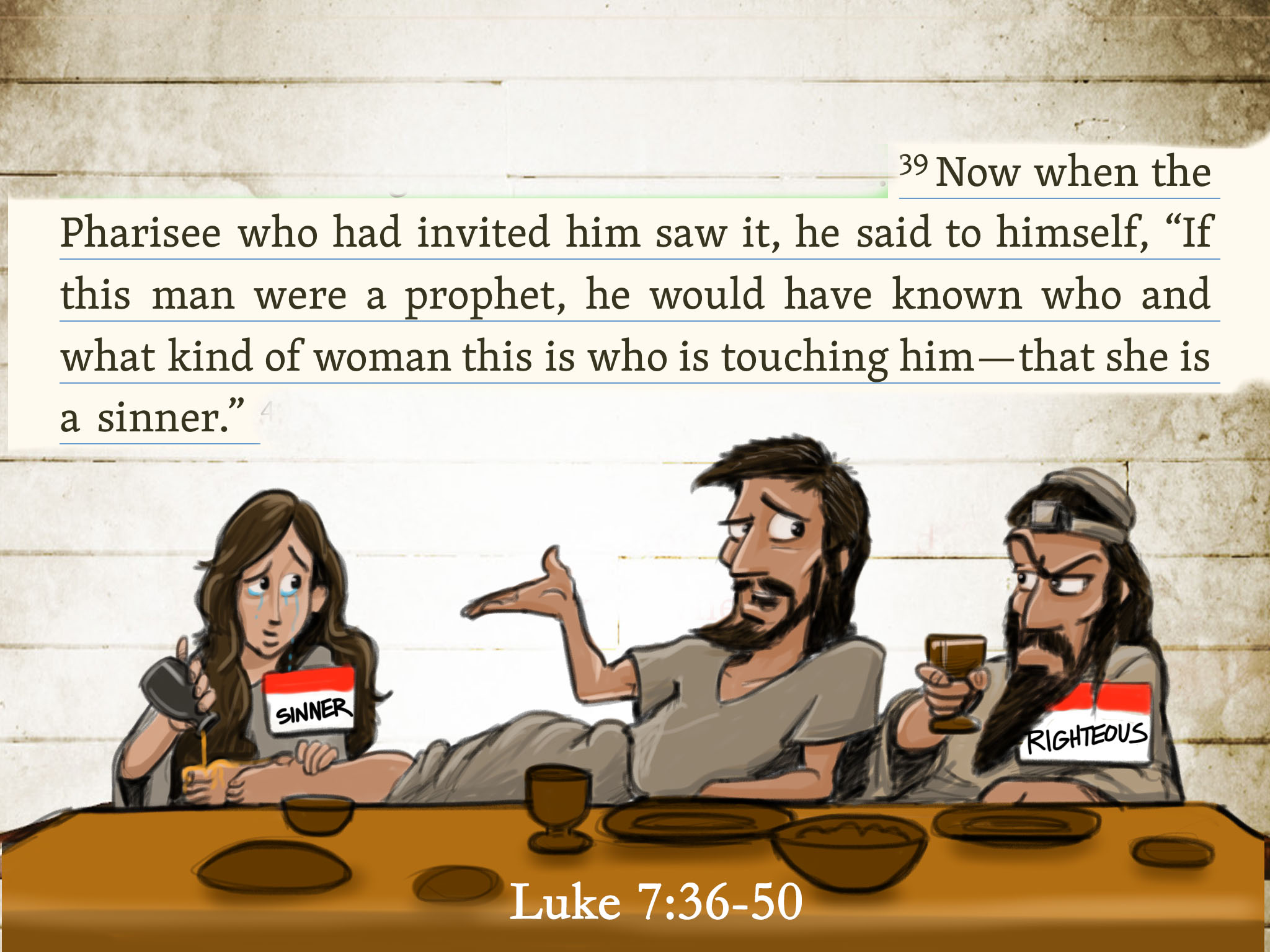
Jesus acceptance of the sinner’s touch brings his validity into question.
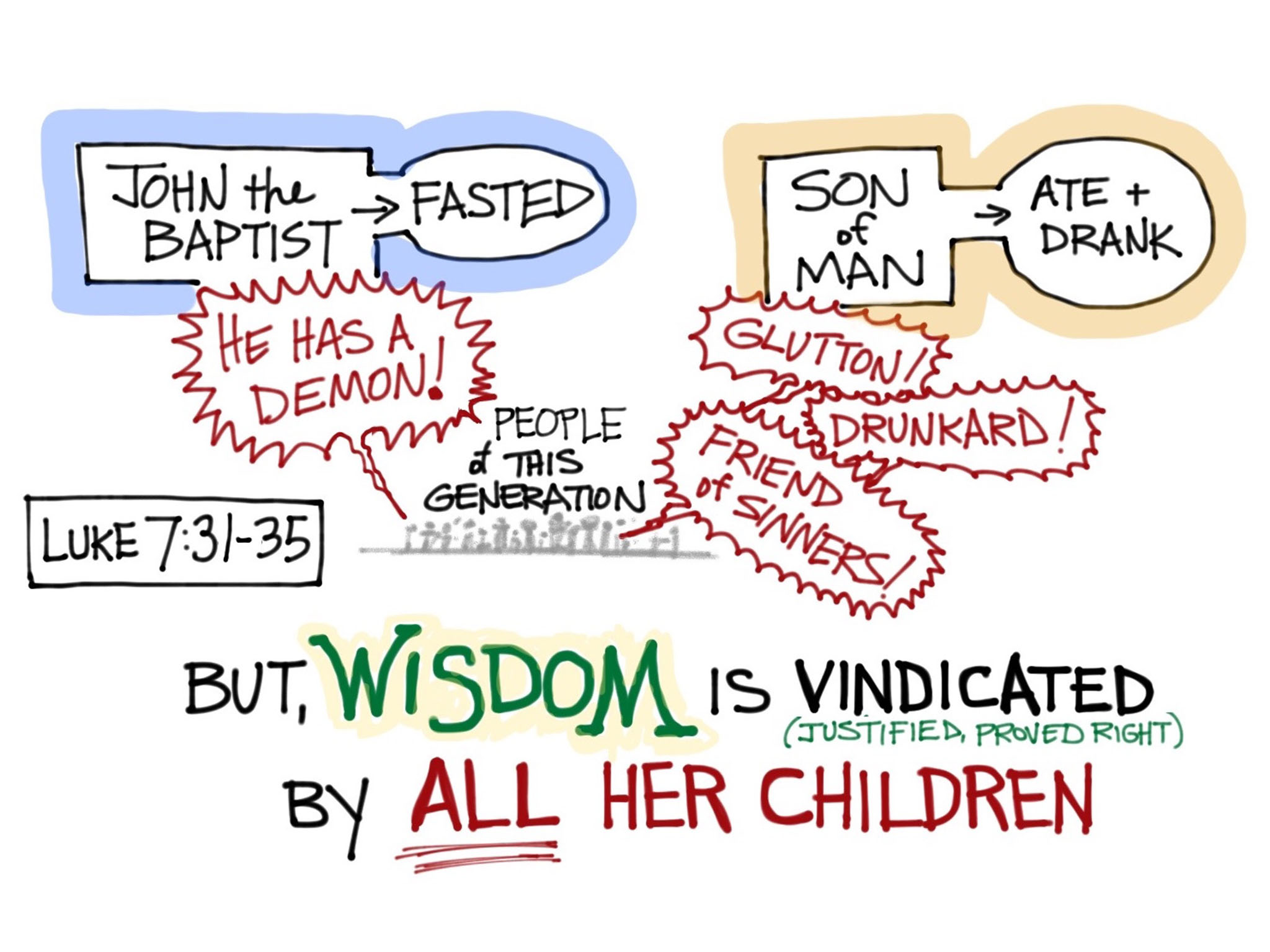
I think we need to frame this story in two ways. First, look at the verses immediately before it. the “people of this generation” includes people like Simon the Pharisee. They can’t be satisfied. They are looking for the wrong thing. But, “Wisdom–the thing they claim to be seeking–will be vindicated.”
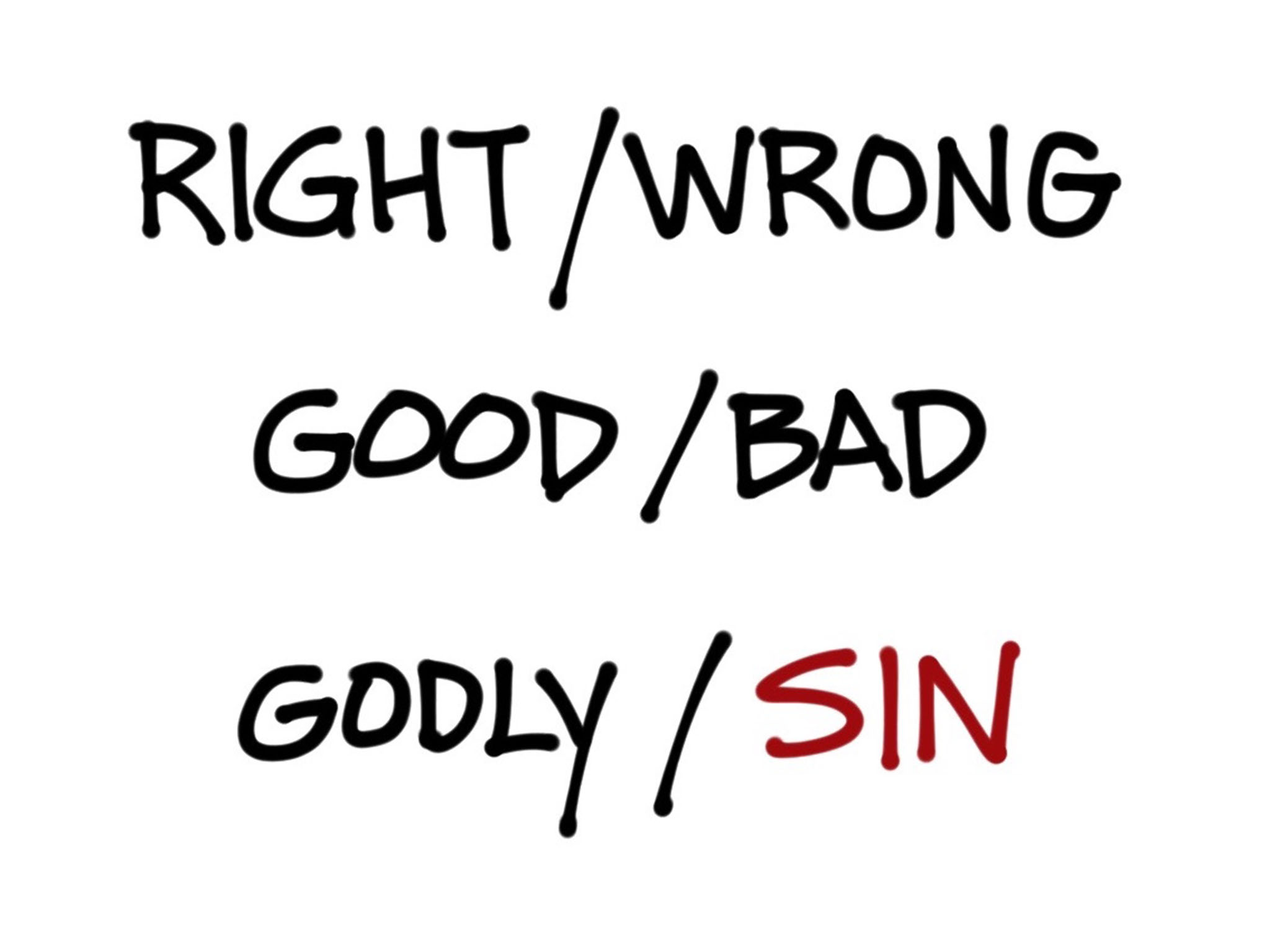
The central question is a core human question. What is good and bad? How do we determine right from wrong? What is sin?
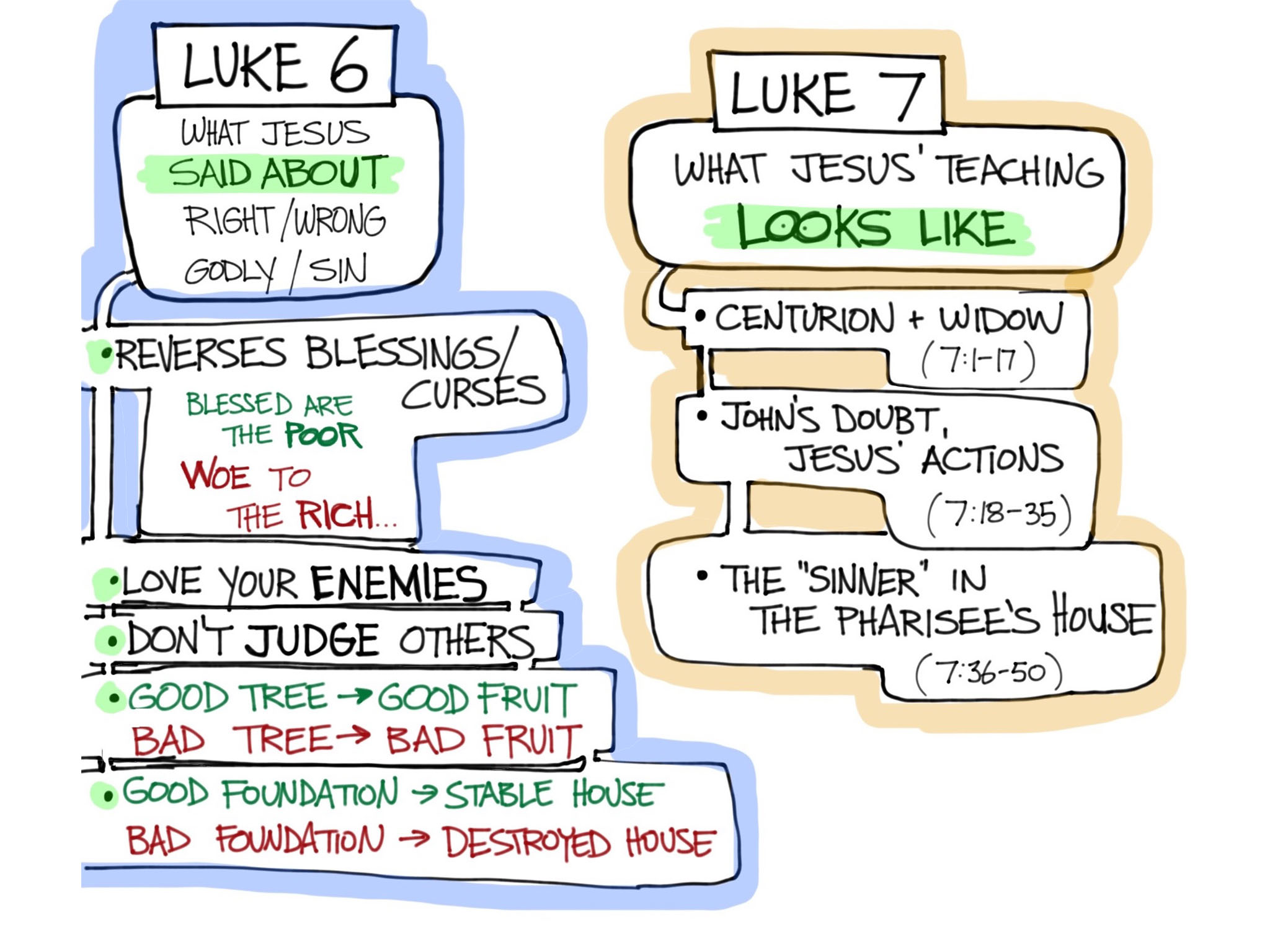 This is where we must turn to the second frame for this story. It concludes the larger section of chapters 6 and 7. Chapter 6 provides Jesus’ teaching ABOUT right and wrong. Jesus reverses the conventional wisdom. He blesses the down-and-outers and curses the exalted. He says to love your enemies, not judge your neighor. Why? Because goodness is not determined by external behaviors, but by the intent of the heart. Good trees produce good fruit and a life built on the wisdom of God stands strong.
This is where we must turn to the second frame for this story. It concludes the larger section of chapters 6 and 7. Chapter 6 provides Jesus’ teaching ABOUT right and wrong. Jesus reverses the conventional wisdom. He blesses the down-and-outers and curses the exalted. He says to love your enemies, not judge your neighor. Why? Because goodness is not determined by external behaviors, but by the intent of the heart. Good trees produce good fruit and a life built on the wisdom of God stands strong.
Chapter 7 demonstrates what Jesus’ teaching looks like lived out. The Centurion’s faith, Jesus’ compassion on the widow, John’s doubt in contrast to Jesus’ compassion, and, now, this story of the fruit bearing witness to the heart.
Before we return to the story, let’s get a little theological and talk about sin…
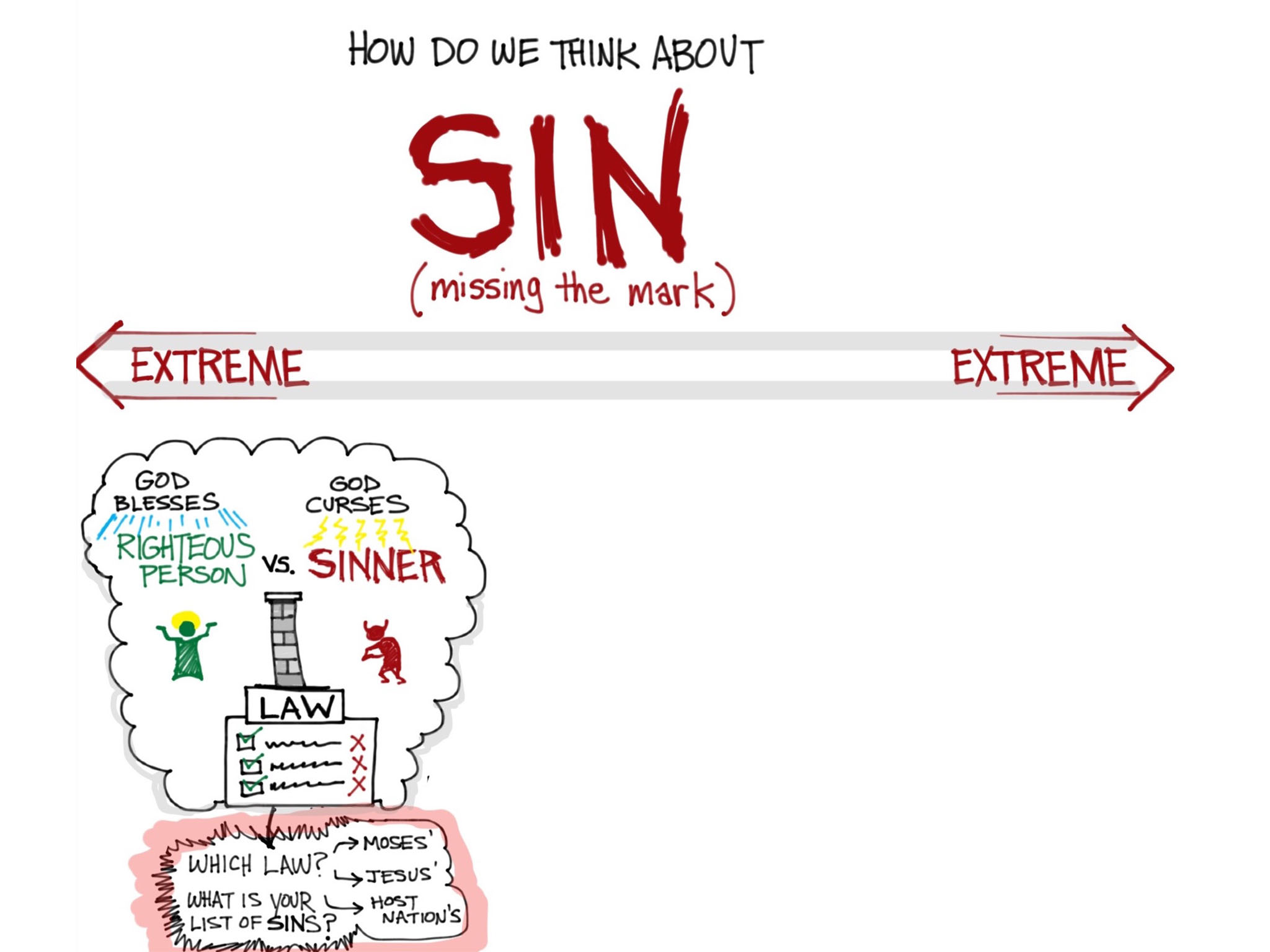
This is an important topic in our society. How do we think about sin? On one side, some people make it about the “righteous person” vs. the “sinner.” It is us against them. The “us” is determined by a list of rules and behaviors that define “righteous” and the “them” is defined by those who don’t follow the list.
Here’s the irony of that view. It all depends upon the list you are using as to who is “righteous” and who is a “sinner.” We see this in the conservative vs. liberal polarization in our nation. “Liberals” are sinners in the eyes of the conservative and “Conservatives” are sinners in the eyes of the liberal.
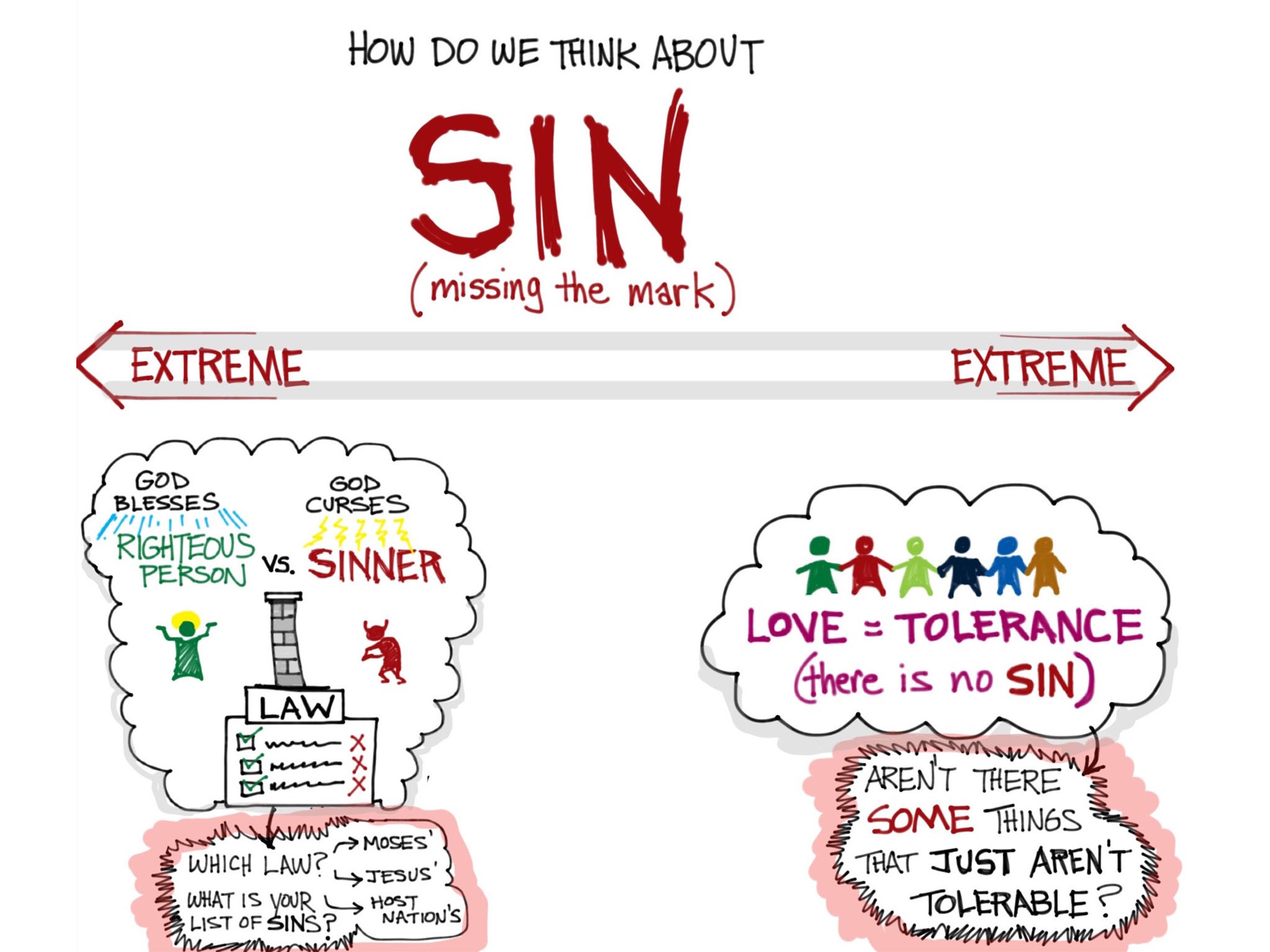
Then, on the other end of the spectrum, there are those who believe that the concept of “sin” is not a helpful one. It is all about God’s love. We must love and accept everyone, just the way they are.
Love gets reduced to tolerance.
The problem with this view is that…really? We will accept any and all behavior? I don’t think so.
We all have lines we must draw regarding behavior that is not acceptable, based upon what we believe is right and wrong. If we’re honest.
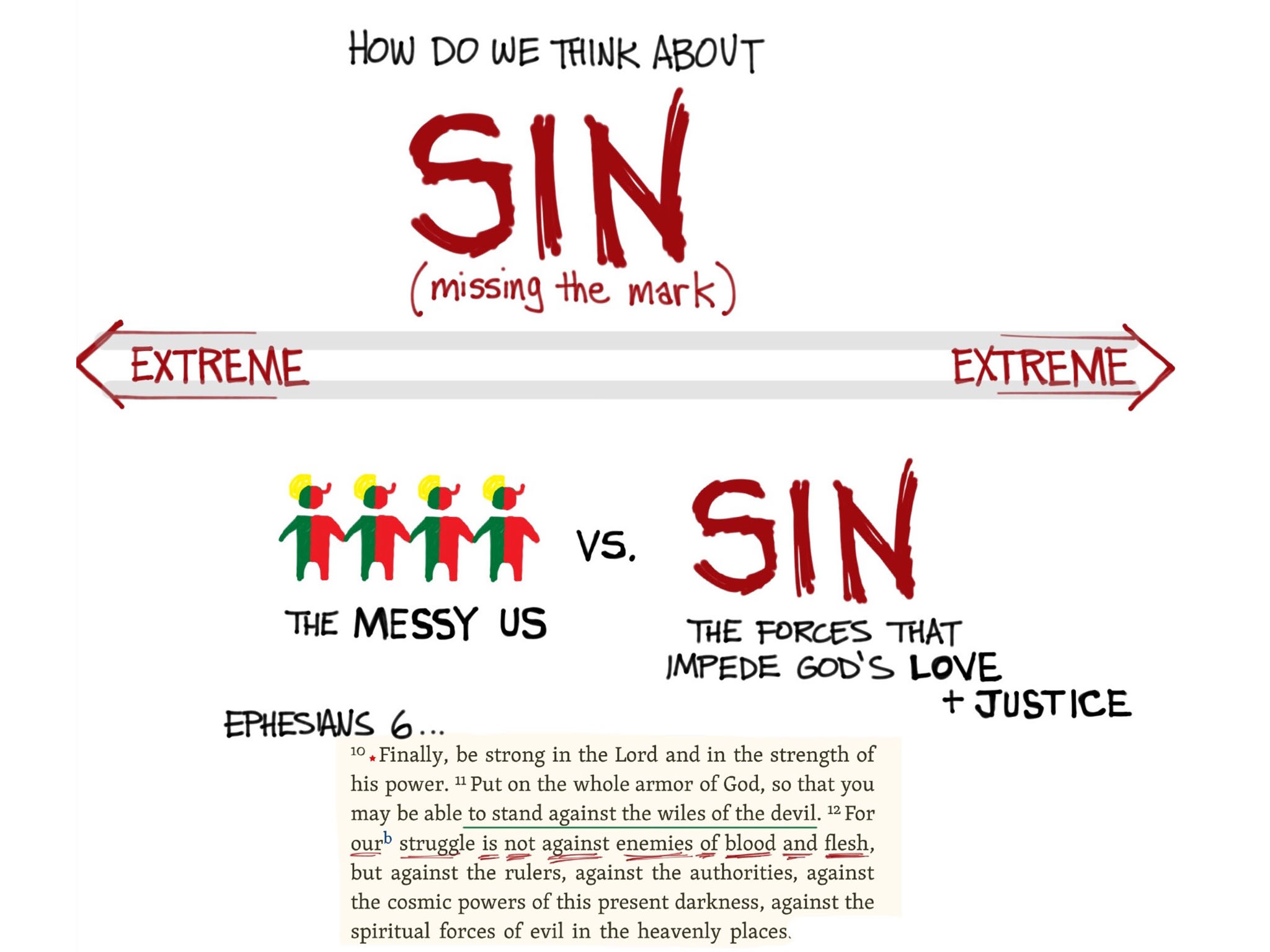
What if there is a third way?
What if it isn’t “us vs. them” but is “us vs. Sin?” We–all of humanity–are a messy, mixed bag of righteous and sinful. Martin Luther said that we are simultaneously saint and sinner. The Apostle Paul said, in Ephesians 6:10-12 that our enemy is not other humans (blood and flesh) but against the forces of evil at work in the world. We must stand against Sin and help each other to be set free from the chains of destructive behavior.
back to the story. Jesus tells a parable…
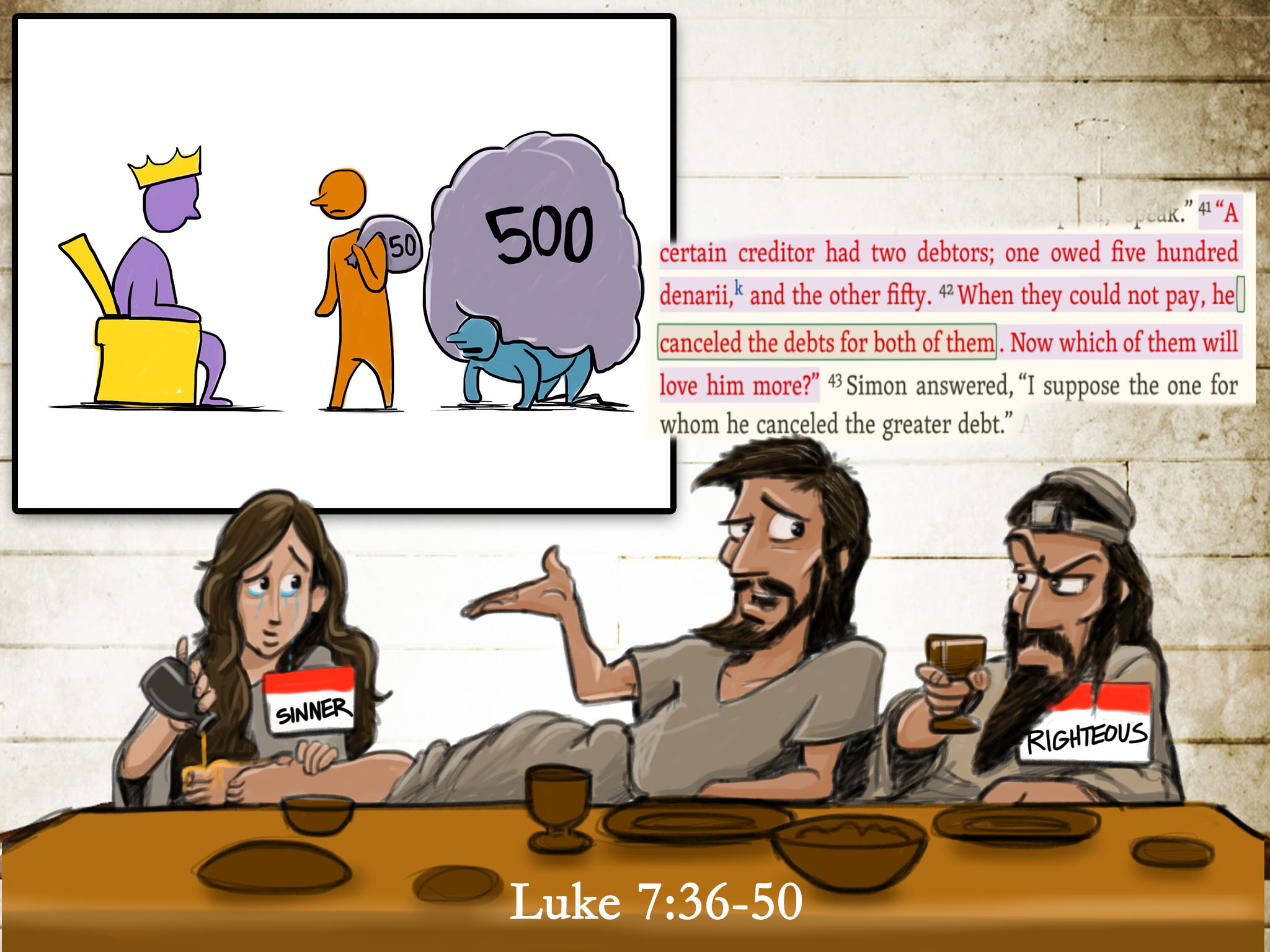
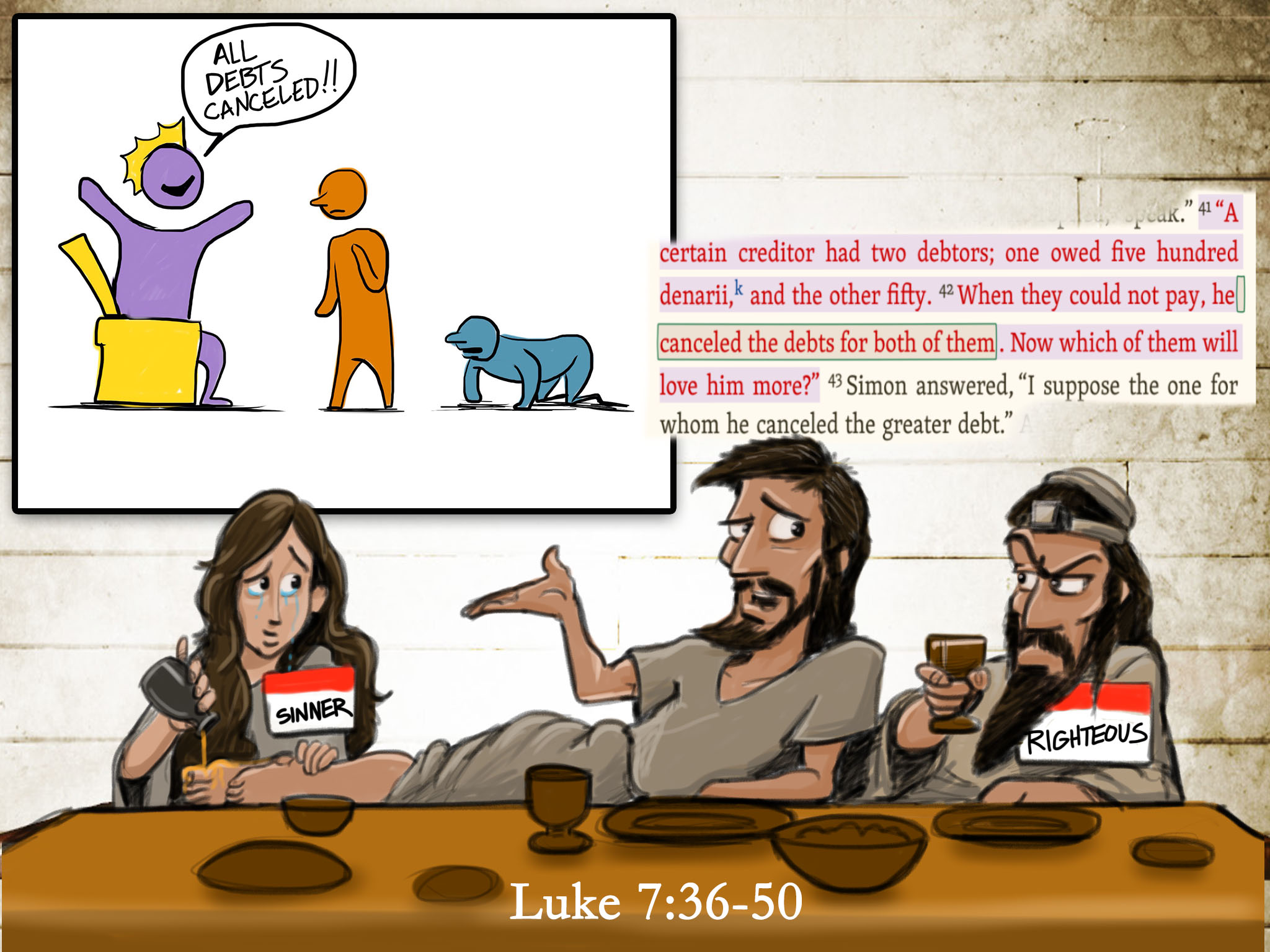
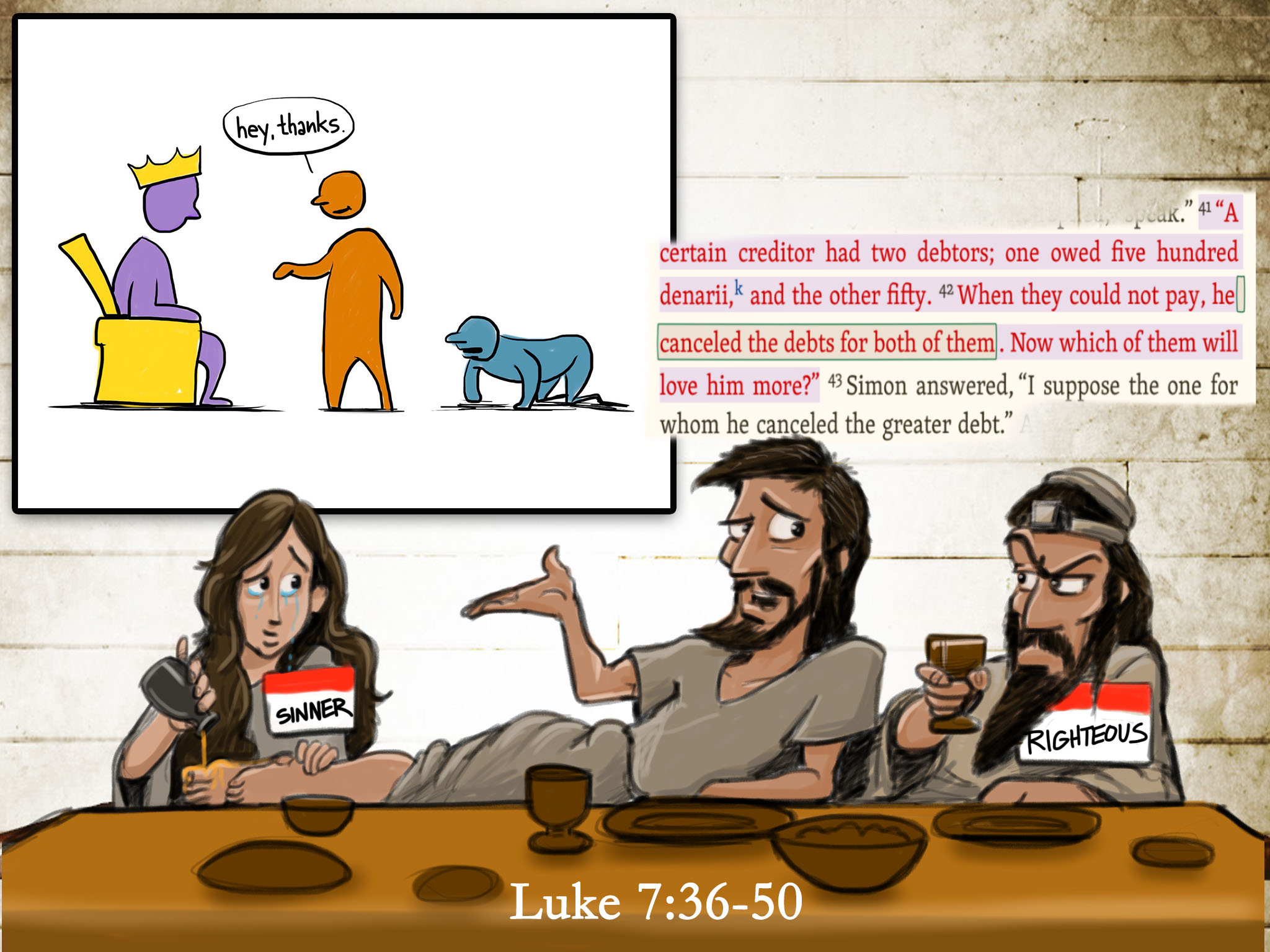
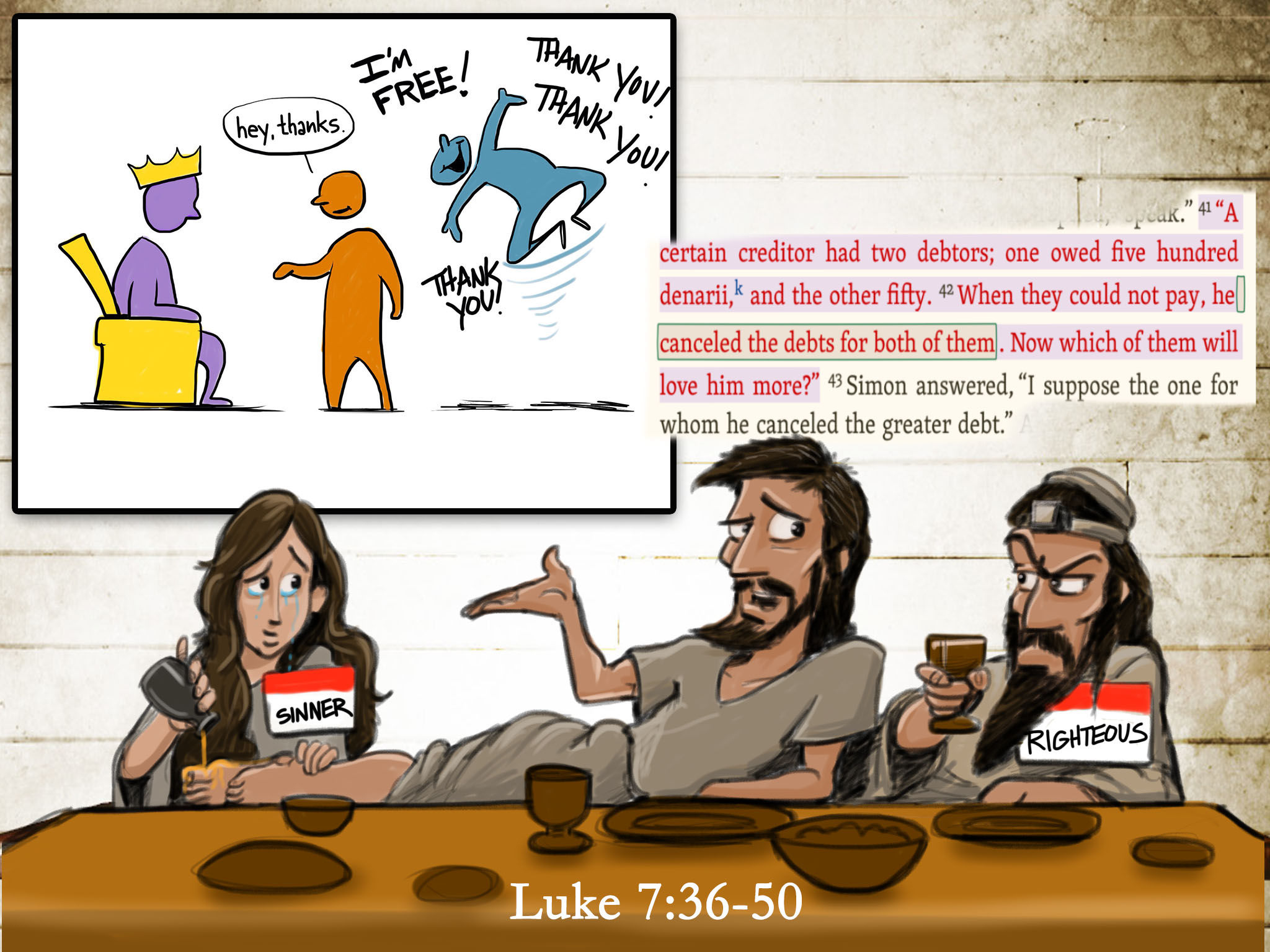
Then Jesus offers a painful review of the “fruit” of their actions.
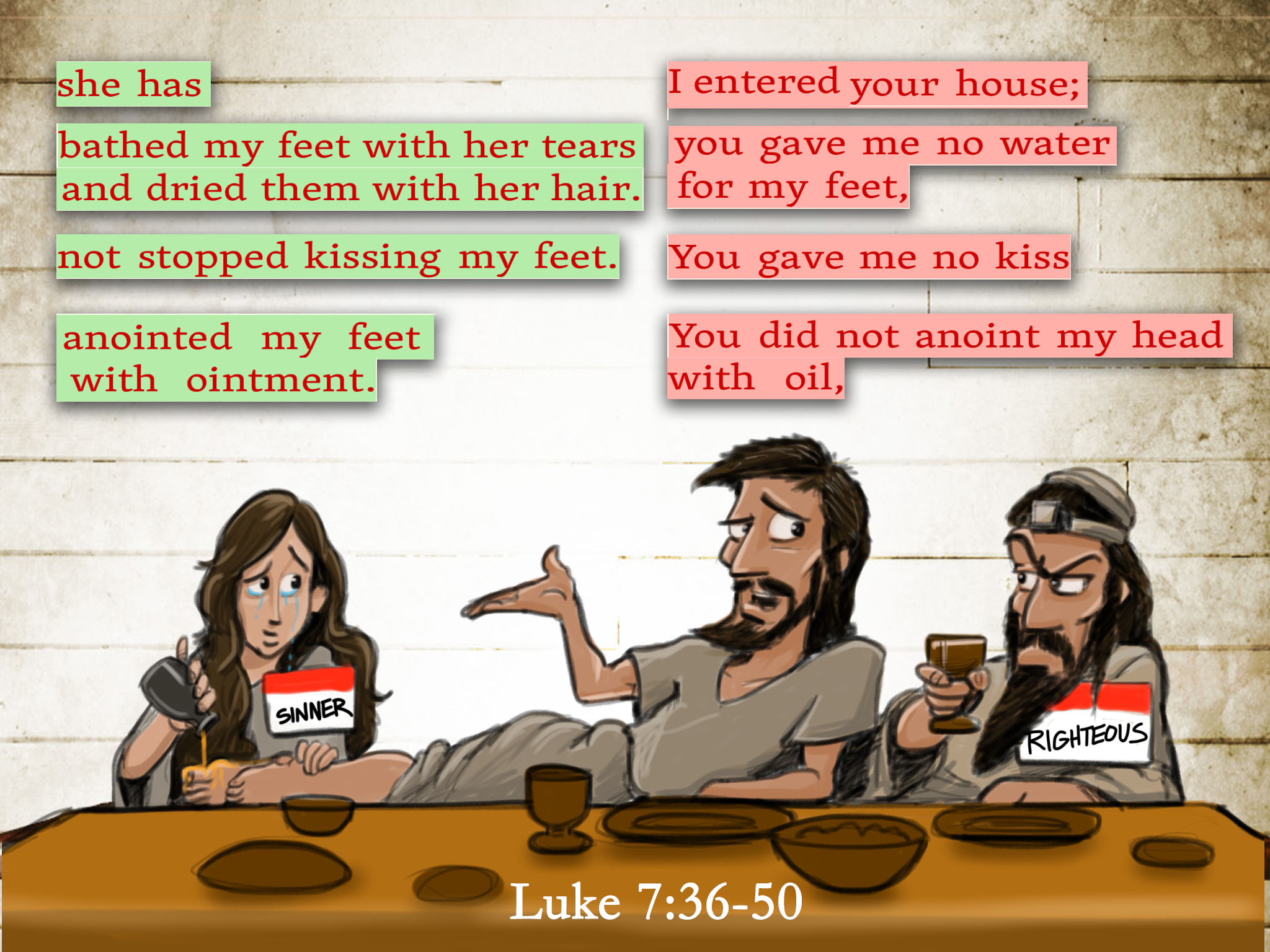
ouch.
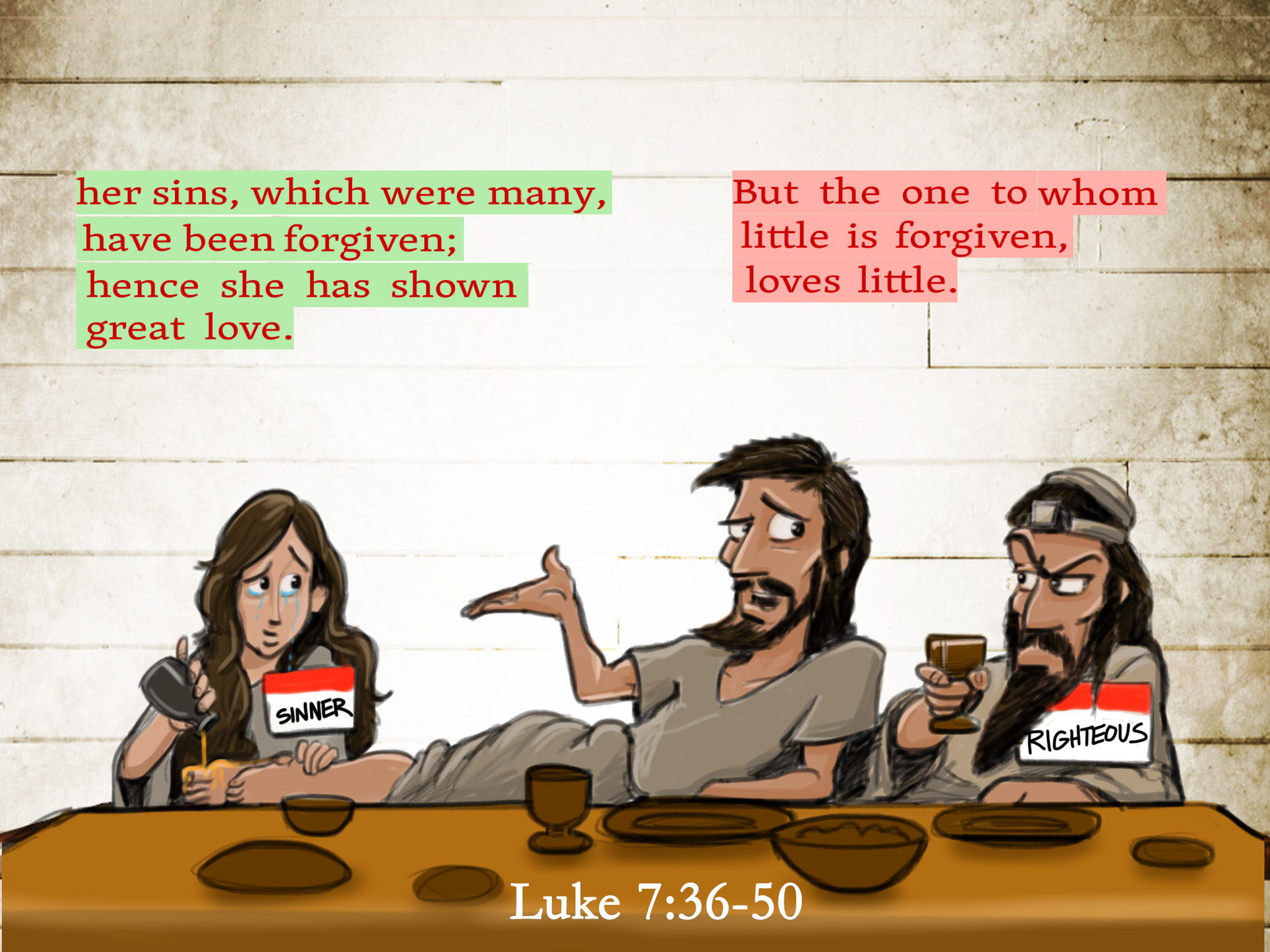
perhaps Simon’s problem was that he did not acknowledge that even a “little” debt is still SIN. Like the Apostle Paul said in Romans 3:23, “all have sinned and fall short.” Then in Romans 3:24, he said, “all are justified by his grace as a gift.”
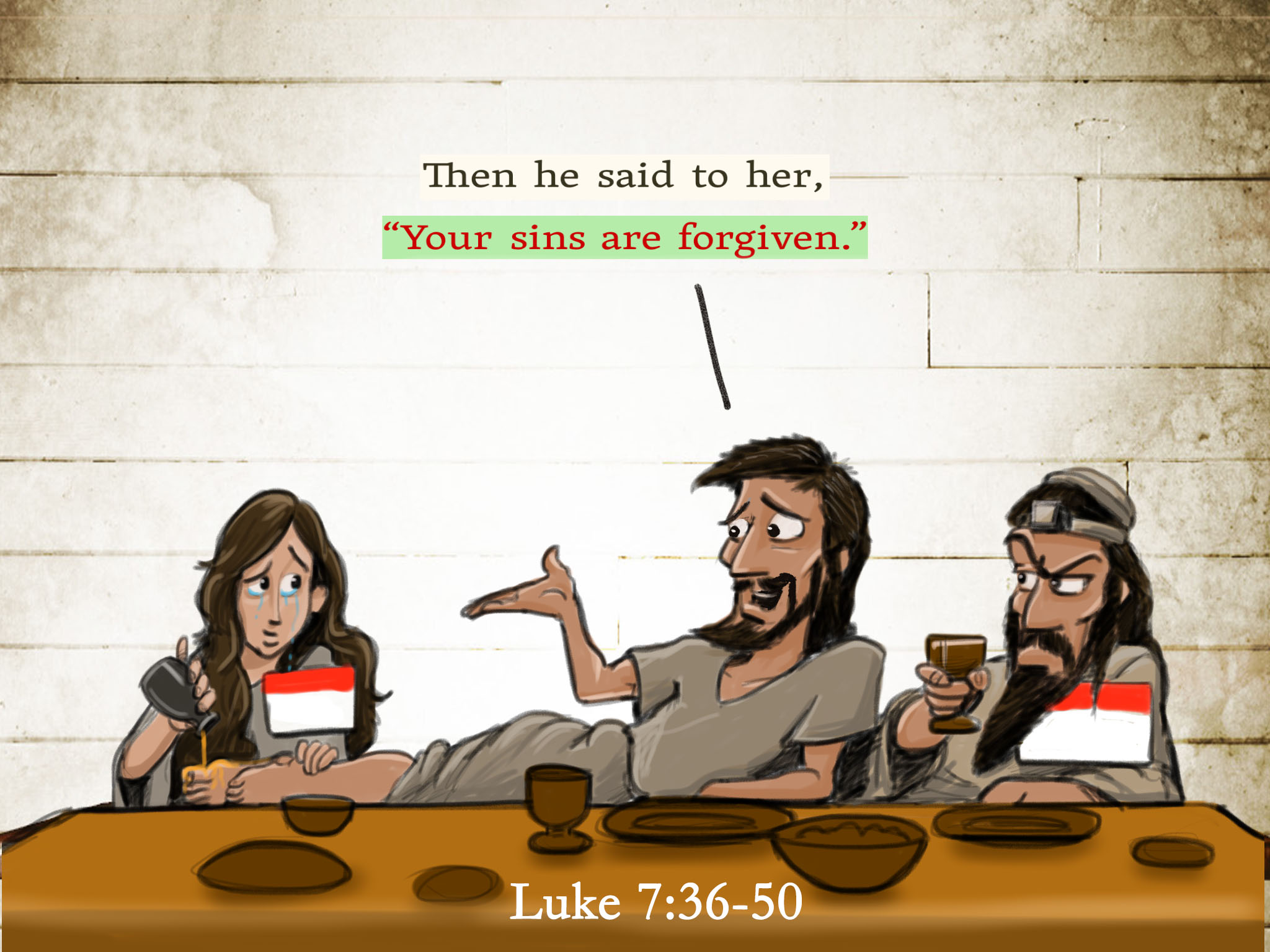
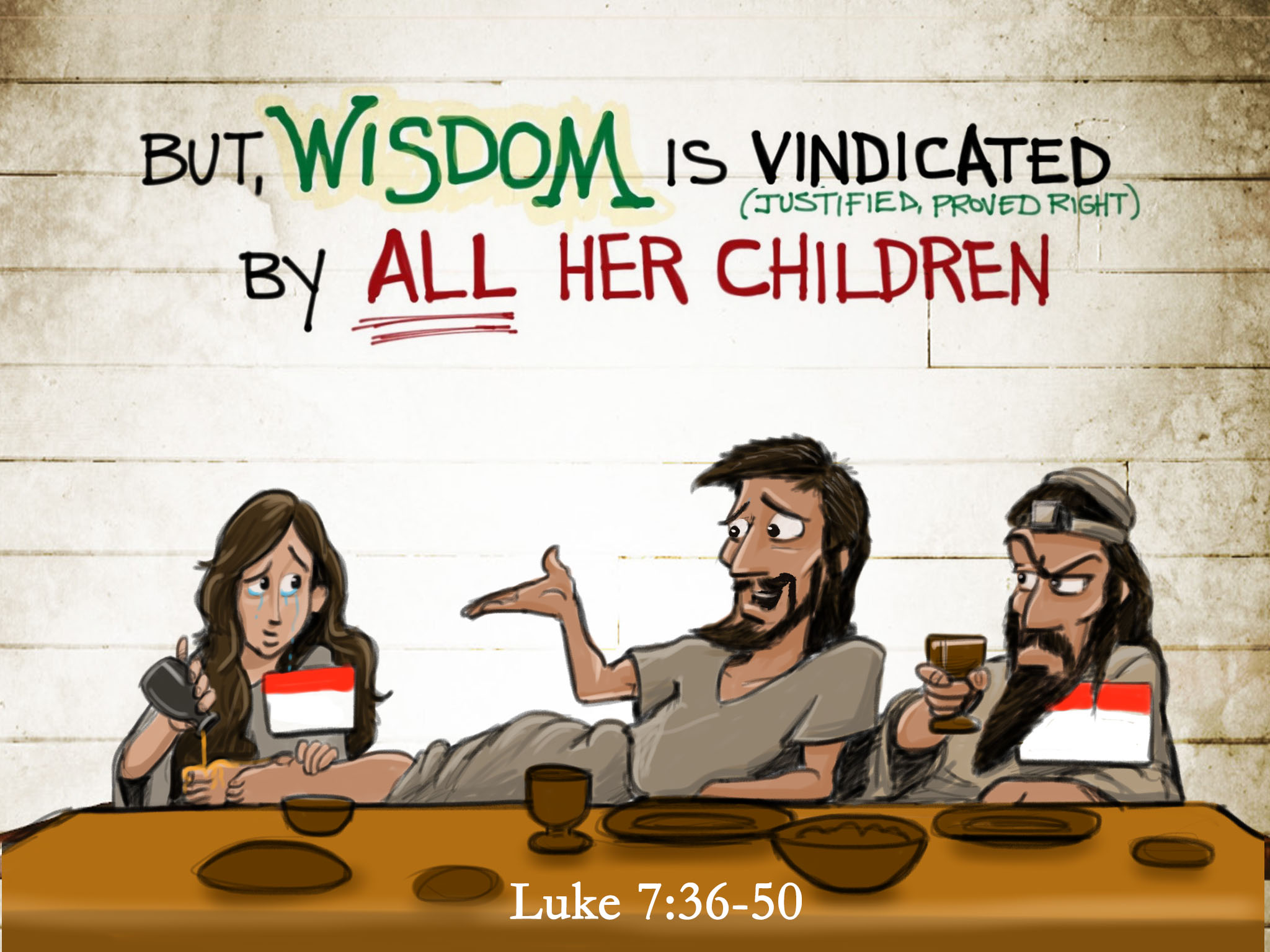



Hi Steve! Would you please email me? I have a question for you. Thank you for your great ministry.
Pastor Kabamba
Is there a way I can buy these cartoons? I loved to use them!
Yes. right here https://gumroad.com/l/wSjH